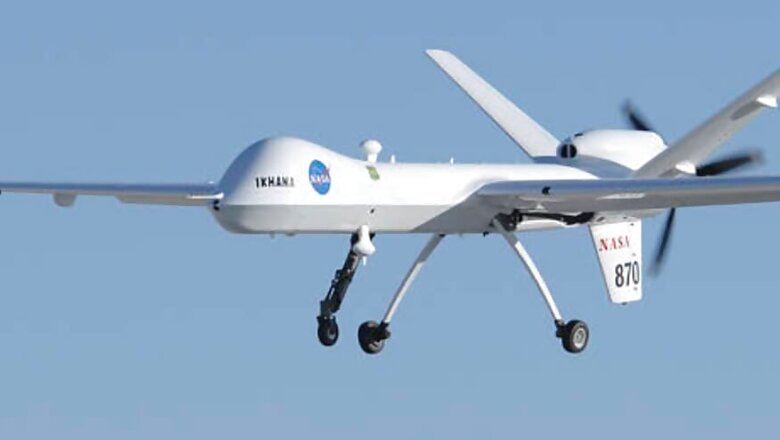
views
NASA has successfully flown its remotely-piloted Ikhana aircraft in the National Airspace System without a safety chase aircraft, opening the doors to services ranging from monitoring and fighting forest fires, to providing new emergency search and rescue operations. This historic flight, which took place on Tuesday, moves the US one step closer to normalising unmanned aircraft operations in the airspace used by commercial and private pilots, the US space agency said in a statement.
"This is a huge milestone for our Unmanned Aircraft Systems Integration in the National Airspace System project team," said Ed Waggoner, NASA's Integrated Aviation Systems Programme Director. "We worked closely with our Federal Aviation Administration colleagues for several months to ensure we met all their requirements to make this initial flight happen," Waggoner added.
The flight took off from Edwards Air Force Base in California and entered into the Class-A airspace, where commercial airliners fly, just west of Edwards at an altitude of about 20,000 feet. On the return trip, the pilot began a gentle descent over the city of Tehachapi, California, into Class E airspace -- about 10,000 feet -- where general aviation pilots fly. The aircraft finally exited the public airspace and returned to its base.
Also read: Reliance Jio 'Double Dhamaka' Offer: Extra 1.5GB Data Per Day on All Prepaid Recharges
"We are flying with a suite of sophisticated technology that greatly enhances the safety capabilities of pilots flying large unmanned aircraft in the National Airspace System," said Scott Howe, a test pilot. "We took the time to mitigate the risks and to ensure that we, as a programme, were prepared for this flight," Howe noted.
Flights of large craft like Ikhana have traditionally required a safety chase aircraft to follow the unmanned aircraft as it travels through the same airspace used by commercial aircraft. The Ikhana was granted special permission by the Federal Aviation Administration (FAA) to conduct this flight under the authority of a Certificate of Waiver or Authorisation on March 30.
Ikhana was the first remotely-piloted aircraft to use airborne detect and avoid technology -- enabling the remote pilot on the ground to see and avoid other aircraft during the flight -- to meet the intent of the FAA's "see and avoid" rules, with all test objectives successfully accomplished, the statement said.
The technology in this aircraft could, at some point, be also scaled down for use in other general aviation aircraft.
Watch: Top 5 iOS 12 Features Announced at Apple WWDC 2018


















Comments
0 comment